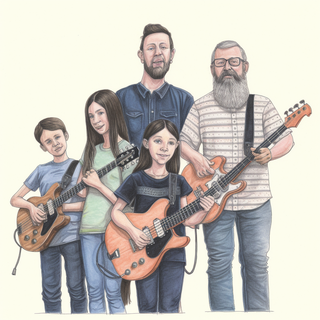When you think of sound healing, you probably picture a “sound bath” with someone playing crystal bowls and gongs while other people lay on the floor and bliss out. While sound baths are wonderful, they are but a part of the greater world of sound healing. There are simpler and more fundamental aspects of sound healing that can be used by the average person to support wellness in day-to-day life.
Sound healing is a broad field with many applications. Practitioners utilize frequencies, sound, light, natural cycles, and the laws of resonance to achieve different health or environmental outcomes. Some of the most common applications include stress and pain relief, nervous system regulation, brain health, and improved sleep. One observational study under the Journal of Evidence-Based Complementary and Alternative Medicine reported that pain, tension, fatigue, anger, and depression were significantly reduced in participants following just one sound healing treatment. A more medical approach to sound healing might look like destroying kidney stones using sound waves, a procedure known as Extracorporeal Shock Wave Lithotripsy (ESWL).
Sound healing also has a profound effect on our children. Whether listening to specially curated music, playing an instrument, humming, or another sound healing exercise, sound therapy can support a child’s auditory process system, strengthening their communication, focus, and learning skills. Sound therapy may also be used to benefit children with dyslexia, autism, ADD/ADHD, and other conditions.
"Hummin Being"
"Fortunately, there are many practical ways to integrate sound healing habits into daily life. Humming is possibly the number one tool in the DIY sound healing toolbox, and it’s accessible for all ages. What better way to get vibrations into the body than to use the instruments we already have inside us?
Humming is known in therapy circles as being a game-changer for nervous system regulation and for dealing with anxiety and trauma. The voice can affect the vagus nerve, which is responsible for the fight-or-flight and rest and digest responses in the body. The vagus nerve runs right through the neck and past the vocal cords, which allows humming vibrations to directly influence the state of the vagus nerve.
Humming is like having a built-in sonic massage tool directly on one of the most important nerve highways of the body. Just humming a single note repeatedly for three to five minutes is enough to feel a difference.
Breath is essential for humming. Humming is an inhale followed by a long, extended exhale. Slow controlled exhales can slow down your brain activity and relax your nervous system. Combine all the benefits of conscious breathing with the energy of sound, and you’ve got a powerful combination for working with stress.
The calming impact of humming is often an effective tool for children dealing with anxiety. Parents can support their child in a stressful or overwhelming situation by encouraging them to hum a familiar tune. This technique can also be applied to increase a child’s attention, which can be helpful for those struggling to focus during homework, exams, or sports.
Take Hugging to the next level
So, you’ve hugged, but have you “hum hugged”? Humming with another person while hugging is a surprisingly delightful technique that can be applied therapeutically in all kinds of situations. Close your eyes, and let yourself play around with pitch, responding to the voice of your humming buddy. You can close your eyes and easily get lost in a world of sound together. It’s a fun way to connect, comparable to eye-gazing but more playful and ethereal.
Hum hugging can regulate both people’s nervous systems, a phenomenon called “co-regulation.” It can be helpful in bouncing back from a stressful situation, reconnecting after an argument, or even just soothing someone else using your voice. It can be used before bedtime with kids and adults to relax, and you’ll often find yourself yawning, which is a good sign that your nervous system is winding down.
To take it one step further while hum hugging, try to hum the exact same pitch. This is known as “unison” pitch when you are on the same frequency. When this happens, the voices blend together in a single current of sound, and it creates a feeling of unity and alignment.
And yes, you can hum hug a tree.
Playing an Instrument
You’ve probably heard that learning to play an instrument is good for the brain, but could it actually reduce the risk of memory loss as you age? Some studies suggest that this could be the case. Playing an instrument with two hands engages both the right and left hemispheres of the brain, which develops additional neural pathways and may increase the size of the corpus callosum when consistent musical practice begins before the age of seven. Research suggests that playing an instrument in older adulthood could also protect against memory loss.
In other words, starting a family band could be healthy! One of my mottos is “family bands equal family bonds.” Coordination, communication, and empathy are all believed to be enhanced through group musical expression, so when it comes to learning an instrument, there’s no better way to incorporate it than to do it as a family. Even just 15-30 minutes of practice a day is enough to see your skills progress and family connections strengthen.
There are countless ways to incorporate sound healing into your home and lifestyle to reach a desired goal. These three practices have been some of the most practical for me in my wellness journey, and I know that they will be of good use for others as well.

